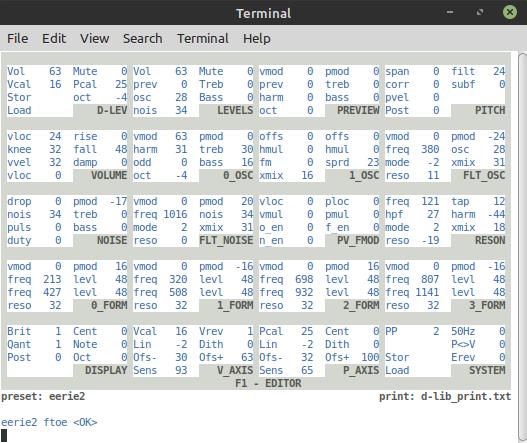"The real vowels sound a bit breathy, though. Could make the picture somewhat less clear for Praat, I guess?" - tinkeringdude
Full disclosure: I'm just flailing around in Praat. For this one note sample it's using very sparse data (~soft sawtooth harmonics, though supposedly sufficiently characterized at this point by the research community?) to determine the lower formants. And the upper formants are largely obscured / attenuated by the "ooo" closing of the mouth. That said, I've unfortunately never been able to directly use the formant pitch numbers coming out of Praat, which shakes my faith in both it and me.
"Also, after an octave or especially more above your voice's "resting pitch", if it was roughly there (though you started a bit lower and then shifted up 2 half steps or so), I'd expect to the vowels becoming less clear. Try to actually vocalize it at that pitch."
Yes, lower notes are definitely more revealing, vowel-wise.
One thing I'm starting to do with every preset that I have access to real samples for is to try to audibly match the patch with the sample at various pitches - an octave seems to work pretty well. I didn't do that here, but it would likely help.
"It's a known effect among singers, although I'm not sure whether it's because of actual changes made in vocal setup to reach the high notes that cause it, or just that a smaller number of (humanly audible) harmonics is "scanning" the voice's response curve, as it were, making things less discernable. At some point the first formant might also be skipped by the fundamental frequency for some vowels?"
I think the effect you are describing is what enables some simple waveshaping analog Theremins to give a passable higher register female vocal sound. The stimulus is above the lowest formant or two, leaving little for the ear to run afoul of.



